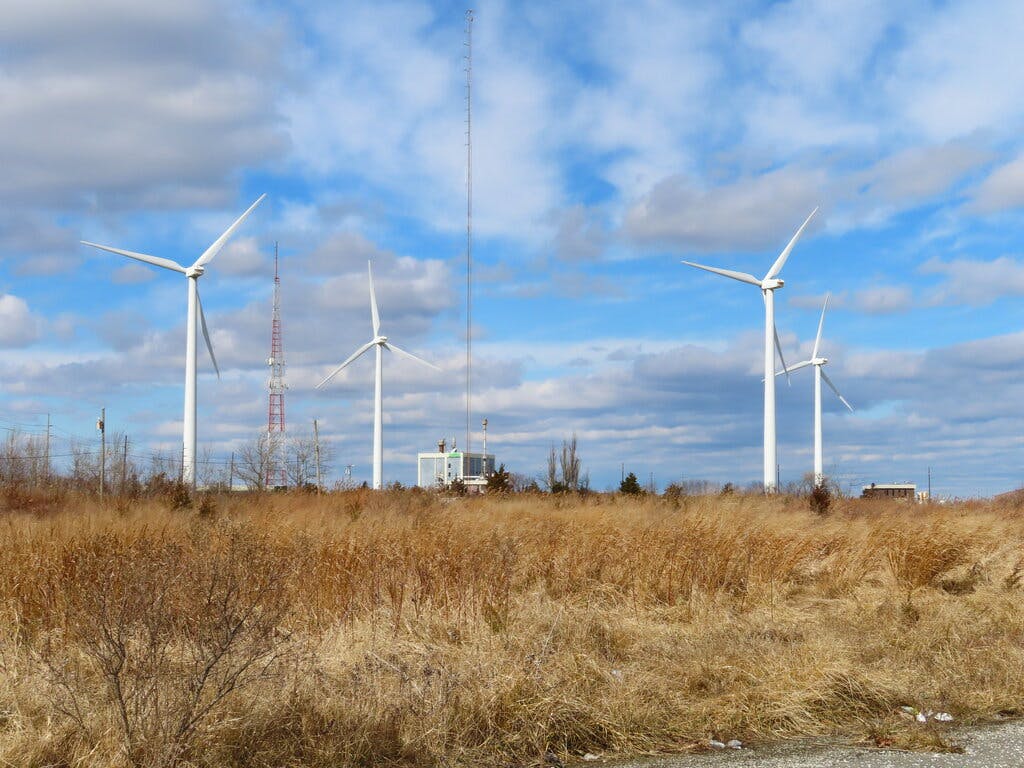Red States Take the Lead on Renewable Energy Initiatives
By eschewing language about social justice and focusing on the economic benefits, red state leaders and utility companies are finding a willing constituency for ‘clean energy’ initiatives.

A surprise development is starting to come into view after the Supreme Court’s decision to return to the states the issue of regulating carbon emissions.
The case cleared the way for a range of responses from legislators, with Democrats bewailing the decision as a move away from stringent oversight of the private sector. Yet it is red states that are taking the lead in installing carbon-free energy sources at a dramatic rate.
Experts say that this bespoke and decentralized approach, rather than the national mandate sought by the Environmental Protection Agency, will accelerate the United States’ power grid shift toward renewable energy. It is a largely unforeseen development that could confound the political calculus.
Democrats have been unsparing in their rhetoric about the high court’s decision. “The Supreme Court has sided with polluters at the expense of the American people,” the heads of the U.S. Climate Alliance, Governors Hochul, Inslee, and Newsom, said. “This ruling makes clear that the actions of governors and state legislatures are more important than ever before.”
It is those local and state officials who are offering a new model. Far from the halls of Congress, a consensus is emerging that broadening public support for climate policy — notably among younger conservatives — might propel red-leaning states to impose efficiency standards to improve the reliability and lower the cost of energy services.
States that are regulated with a light touch are actually embracing wind and solar power as they become more cost- and energy-efficient than fossil fuels. In 2021, the state with the most non-carbon energy additions was Texas, more than double the installations of the no. 2 state, California, which has a significantly more robust climate policy. Alabama, Virginia, and Connecticut had the highest growth rates for clean power, according to research from a renewable energy industry trade group, the American Clean Power Association.
This political mix of states represents a growing bipartisan interest in clean energy. State regulators of electric utilities are investing in more affordable, reliable, and cleaner services, “not for any ideological reason, but because of their common interest in their constituents,” the energy co-director of the nonprofit environmental advocacy group Natural Resources Defense Council, Ralph Cavanagh, said.
Meanwhile, the second-largest gas and electric utility company in the country, the Southern Company, departed from its decades-long reliance on fossil fuels after accounting for the reduced costs, increased energy output, and improved dependency of carbon-free resources.
“The leadership of the electricity sector has fully bought into it, and they will not lose a step as a result of this Supreme Court decision because it’s firmly grounded in economics, reliability, and environmental values that are widely shared,” Mr. Cavanagh said.
Forty-percent of America’s electricity in 2020 came from nuclear energy, hydropower, solar energy, and wind, all of which are considered “clean” energy.
According to the EPA’s Continuous Emissions Monitoring System, since 2005, the electricity sector has cut its carbon dioxide emissions by one-third and reduced emissions of sulfur dioxide and nitrogen oxide pollutants by 91 percent and 79 percent, respectively.
These pollution reductions have the potential to generate $360 billion to $790 billion worth of public health benefits, mainly due to fewer premature deaths, lost work and school days, ER visits, respiratory illnesses, and asthma attacks, the EPA estimates.
A researcher on reducing political polarization on environmental issues, Renae Marshall, explains that given the divisive political nature of climate change, legislation that avoids ideology and prioritizes economic incentives is popular even in Republican states.
Ms. Marshall has found that Republican and bipartisan co-sponsors disproportionately pass climate bills that include language about “economic justice” and focus on expanded consumer and business choice, rather than social justice rhetoric based on issues of race and gender.
“Who can argue with saving money and using resources that are abundant?” Ms. Marshall said. “Whether you believe in climate change or not, it’s kind of a question of dollars and cents now.”
Policy makers in states like Arkansas, South Carolina, and Utah recognize the benefit of deploying renewable energy to bring down electricity costs or increase economic opportunity, the deputy director of policy for the Climate and Energy Program at center-left think tank Thirdway, Lindsey Walter, said.
“If we move towards a hundred-percent carbon free economy by 2050, we will create jobs in every single state across the country,” Ms. Walter said. “A lot of those jobs end up being concentrated in the middle of the country and in red states that stand to benefit enormously from a clean energy transition.”
However, Ms. Walter argues that a system-wide mandate is necessary to unify the patchwork of climate policy across states: “We’re in a time crunch and in order to meet our climate goals, we need to act quickly and that would require significant action at the federal level.”
Given that red states constitute the majority of American land, “there is untapped potential for wind and solar energy,” Ms. Marshall said.

